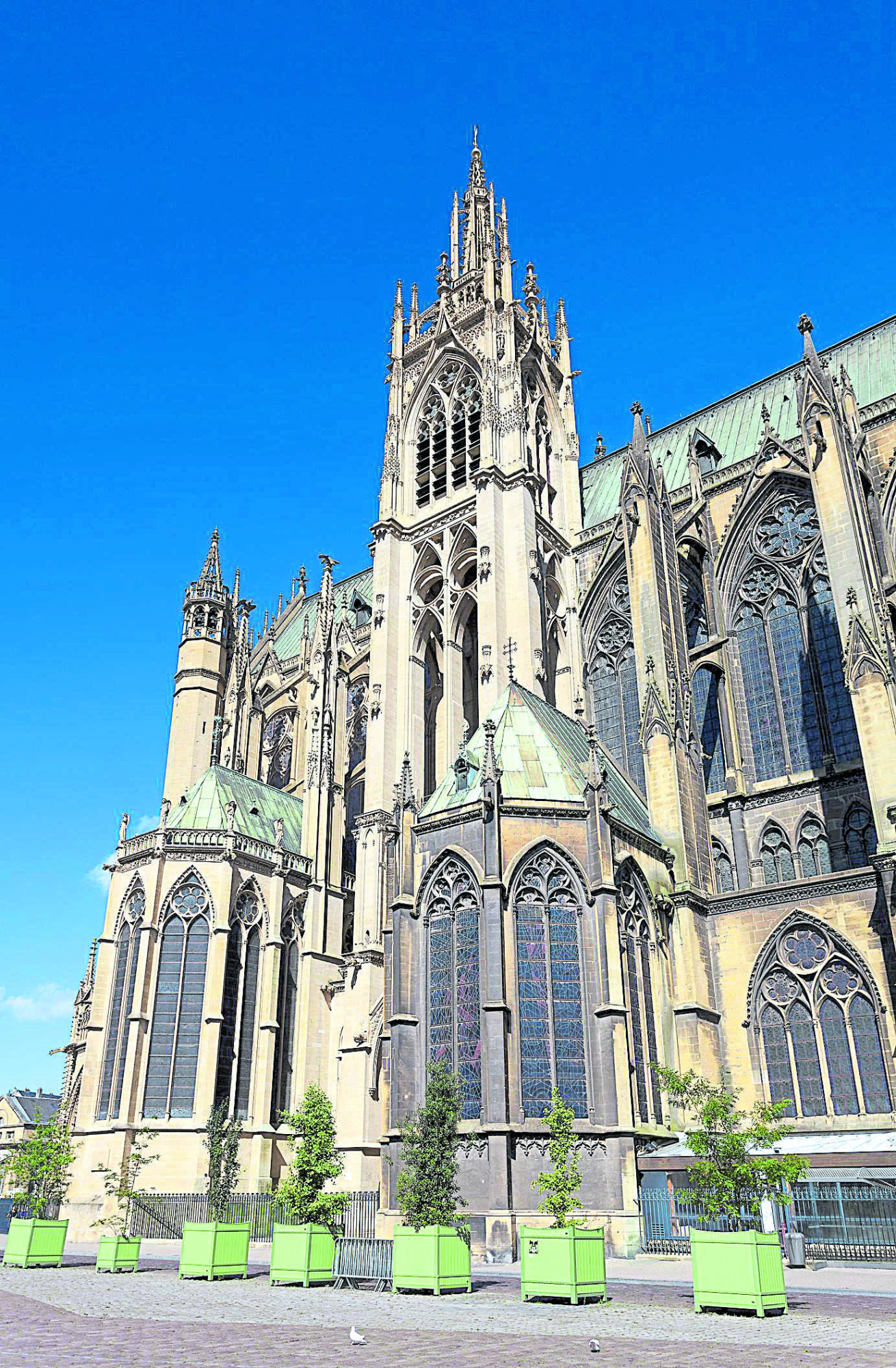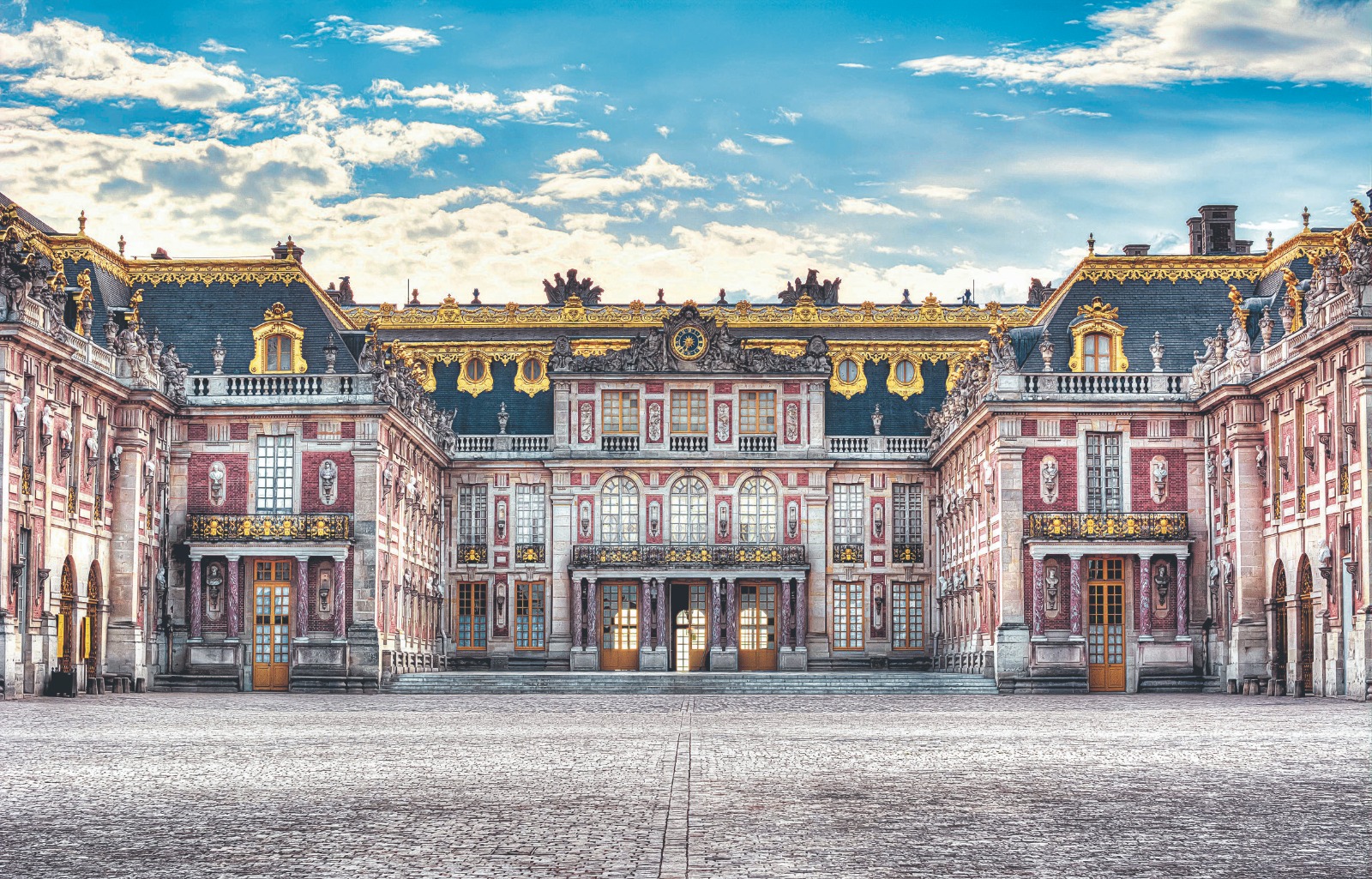Metz, a small city with one of the most beautiful Gothic cathedrals

The Cathedral of Saint-Étienne alone, a 13th-century Gothic building completed 300 years later, is worth a visit while in Metz. It's famous for being one of the tallest in Europe and, above all, for the "lantern of God" effect, as parishioners call the spectacle of the sun's rays shining through its 6,500 square meters of stained-glass windows.
Nearly a million people pass through this marvel each year. Built from copper-colored limestone, which gives it its golden hue, it was the work of architect Pierre Perrat , who was granted the privilege of being buried within his own work, which he never saw completed. Hermann von Munster in the 14th century, Theobald Lixheim, and Valentin Bosch in the 16th century designed most of the stained-glass windows.
Everything has a taste of history in Metz, nestled at the confluence of the Seille and Moselle rivers in eastern France, with more than 200,000 inhabitants spread across 46 municipalities. Its streets, its solid and imposing medieval buildings, its monuments, its museums, its traditions, all remind us that they precede it by 3,000 years.
The Celts once roamed the area, but the most lasting mark was left by Rome. At the end of the 3rd century, its conquerors built aqueducts, thermal baths, temples, and a wall that served as protection against Hunnic vandalism, but in 451, Attila destroyed it.
The only thing that was saved – a fact considered miraculous until today – was the sanctuary dedicated to the martyr Saint Stephen (Saint-Étienne), over which the cathedral was built.
In 1552, Metz became a city of the King of France. At the end of the Franco-German War of 1870, it was annexed to the German Empire. During this period, the famous Neo-Romanesque railway station, voted the most beautiful in Europe several times, was built.
In 1975, it was declared a historical monument, although this is not the only case: despite the severe conflicts that Europe experienced in the first half of the 20th century, Metz managed to preserve its rich heritage.
Germany's defeat in World War I returned it to France, but World War II subjected it once again to German rule until, in 1944, the United States liberated it and returned it to the French.
One hour from Luxembourg and Germany, three from Brussels and 85 minutes from Paris if you take the TGV (high-speed train), Metz is the capital of Lorraine, the historic region that is part of what is called Grand Est and which gives its name to one of France's culinary delights.
Traditional gastronomy Quiche Lorraine, a shortcrust pastry filled with cream, eggs, and bacon, dating back to the 16th century and eaten hot with a green salad.
If you're going for the day, it's best to focus on the cathedral and the ultra-modern Centre Pompidou-Metz , a stark contrast between yesterday and today. In between, a stop for a delicious meal at the Marché Couvert, just a few meters from Saint-Étienne, is recommended, sure to blow the minds of foodies and those with a sweet tooth. A gastronomic festival.
Next door, and free of charge, you can visit the Cour d'Or Museum and gain a comprehensive insight into the historical, architectural, and artistic wealth of the site. The Gallo-Roman archaeological collection housed within its 14th-century walls is one of the most important in France.
From there, take in the streets of Sainte-Croix Hill, the birthplace of the city, lined with refined shops that scream for shopping. You can also sit down with a slice of Mirabelle cake—a type of tart red or yellow plum—a culinary emblem of the area. Enjoy it with a cup of tea or espresso in one of the small cafes on Place Saint-Jacques or Place Saint-Louis. The latter, as old as the cathedral, was the site of fairs, markets, and even mysterious medieval rituals centuries ago.

Saint-Étienne is a 13th-century Gothic building, completed 300 years later. Photo: iSTOCK
And speaking of earthly pleasures, note down as possible souvenirs the Mirabelle schnapps and the Moselle wines, ideal for pairing with the famous charcuterie or Lorraine pâtés.
A milestone of art The Pompidou-Metz, a branch of its Parisian namesake, is our next stop. A tribute to modern and contemporary art. Its bold structure, with its roof resembling a Chinese hat, is a testament to this.
The 5,000-square-meter building, which houses three galleries, a theater, and an auditorium, was designed by architects Shigeru Ban and Jean de Gastines. The foundation stone was laid in 2006, inaugurated by Nicolas Sarkozy four years later, and is considered the most important exhibition space outside of Paris, hosting both semi-permanent and temporary exhibitions from the Musée National d'Art Moderne. Art experts will be well aware of this.
READ ALSO

If you have an extra day to spare, don't forget the 4th-century Saint Pierre aux Nonnains church, built on Roman baths, and the younger Templar chapel, which dates back to the 12th century.
And don't miss a stroll through one of the natural spaces that have earned Metz the title of "green city," among others it already has. It has 22 themed gardens spread over 15 hectares.
For music lovers and bel canto aficionados, the Metz Opera House, a theater with more than 700 seats built in 1752, offers an interesting and varied program of opera, theater, lyric poetry, and choreographic performances.
The legend of Graouilly And finally, don't leave without taking a keychain, a postcard, or a statuette of the Graouilly. You'll see this dragon-like creature everywhere, even in the cathedral crypt, with a sizable figure dating back to the 16th century, or hanging as a banner.
According to legend, he lived in the arena of the Roman amphitheater in the 3rd century and devastated the city. He ate a dozen Messina residents every morning. The people begged for help from Saint Clement, the first bishop of Metz, who fought him alone and defeated him by drowning him in the Seille River.
However, he couldn't prevent the dragon from becoming the eternal symbol of the city, featured on statues, coats of arms, monograms, and even at the feet of the statue of Saint Clement. According to some historians, the legend interprets the victory of Christianity over the paganism that reigned at the time. Whether myth or reality, the charming Graouilly only underlines the magic of the small city of Metz with his legend.
The must-see places in the city Saint-Étienne Cathedral: With its 42-meter vault, it is one of the tallest Gothic buildings in Europe.
Cour d'Or Museum: Highlights include its Gallo-Roman collection and the Saint-Pierre-aux-Nonnains presbytery, a remarkable example of Merovingian sculpture.
Centre Pompidou-Metz: a branch of the Parisian museum, its 77-metre-high shaft evokes the year of the opening of the Centre Pompidou in Paris (1977).
German Gate and Walls: 7 km of medieval remains, with 18 gates and 38 towers.
The Arsenal: a concert hall with exceptional acoustics, decorated with beech and sycamore marquetry.
The Imperial Quarter: an example of 20th-century Germanic urban planning and a candidate for UNESCO World Heritage status.
The squares: the Place du Chambre, the Place d'Armes and the medieval Place Saint-Louis stand out.
The gardens: 36 km of riverside walkways and 40 m² of green areas per inhabitant.
For the Nation (Argentina) - GDA
eltiempo





